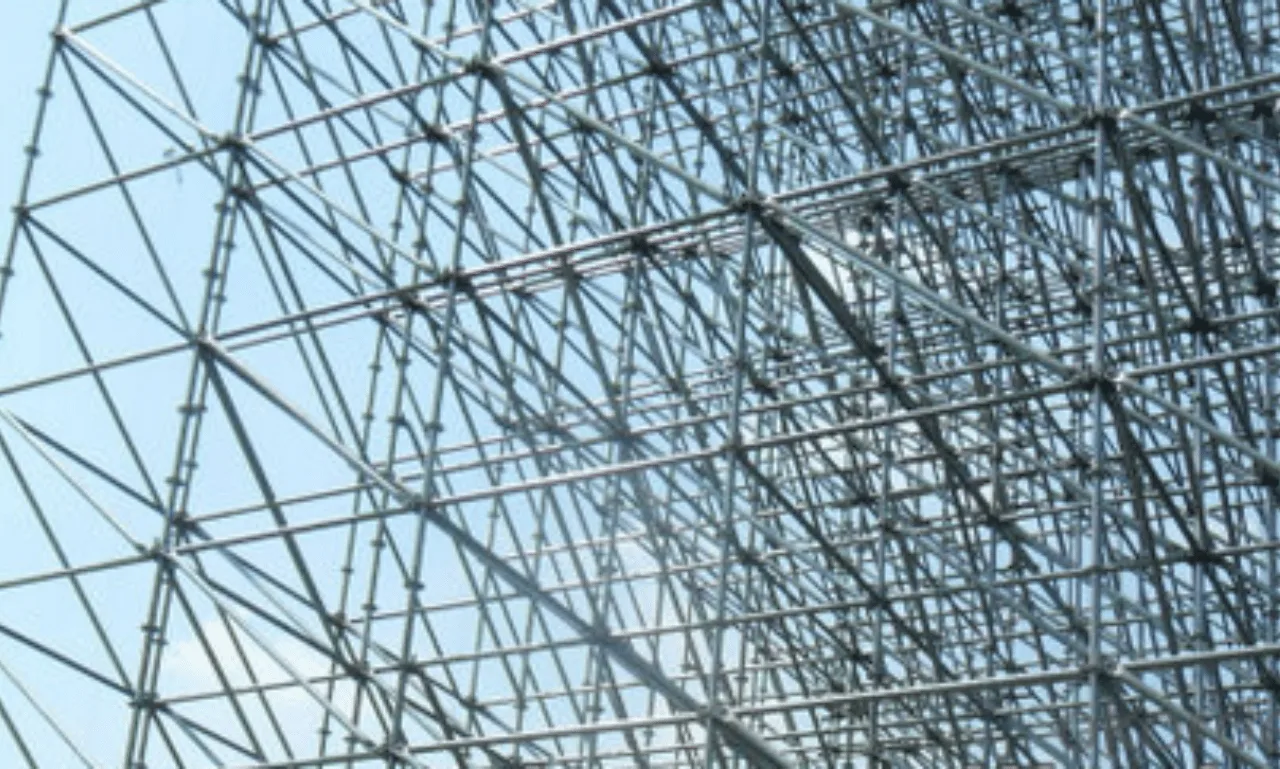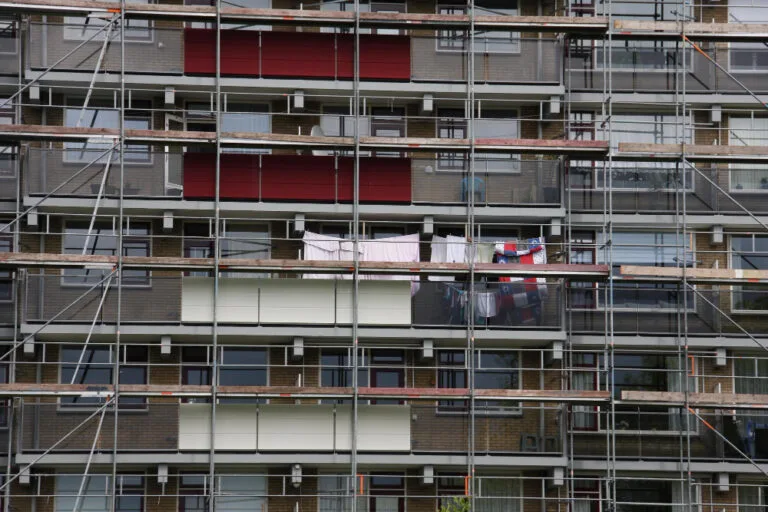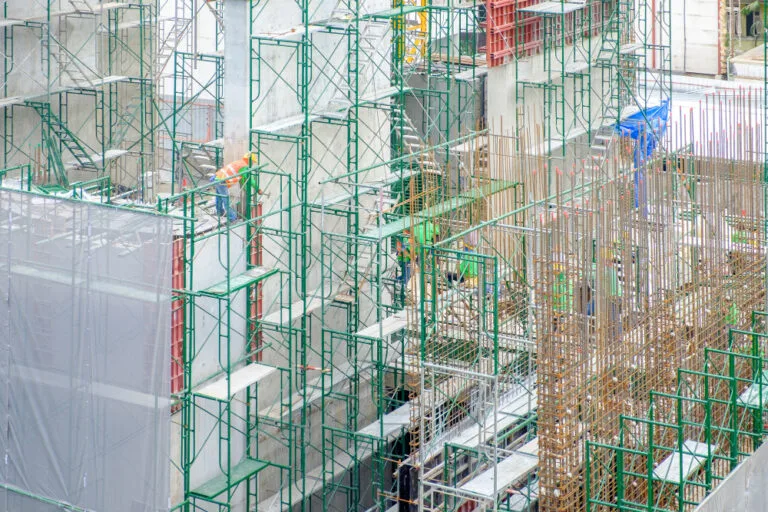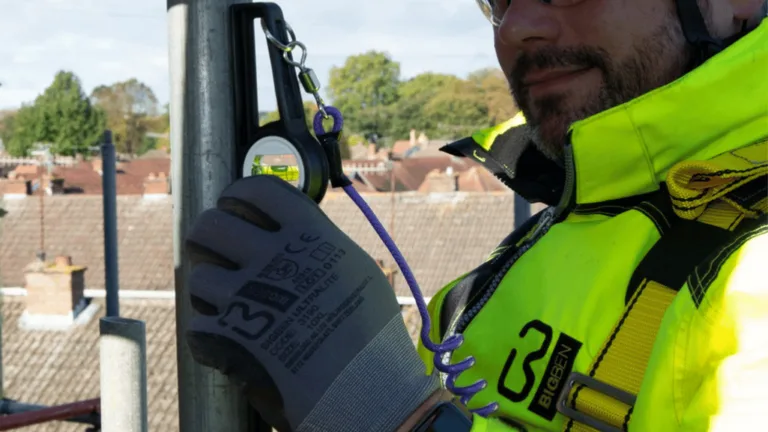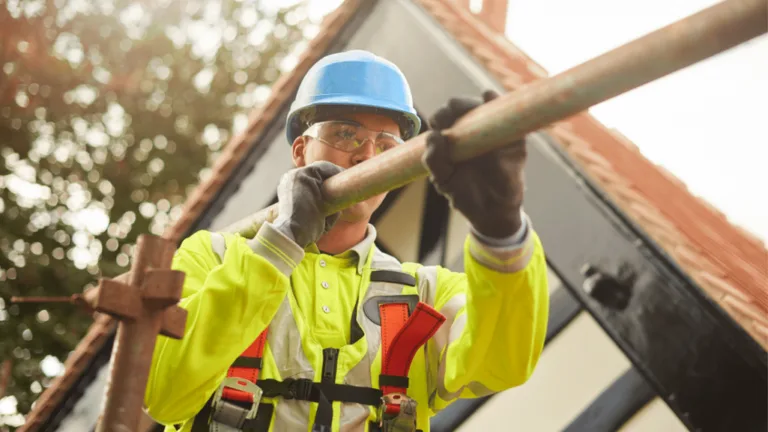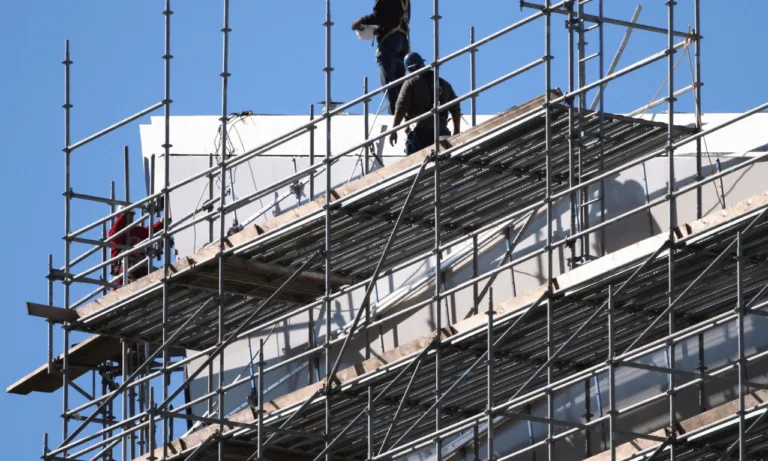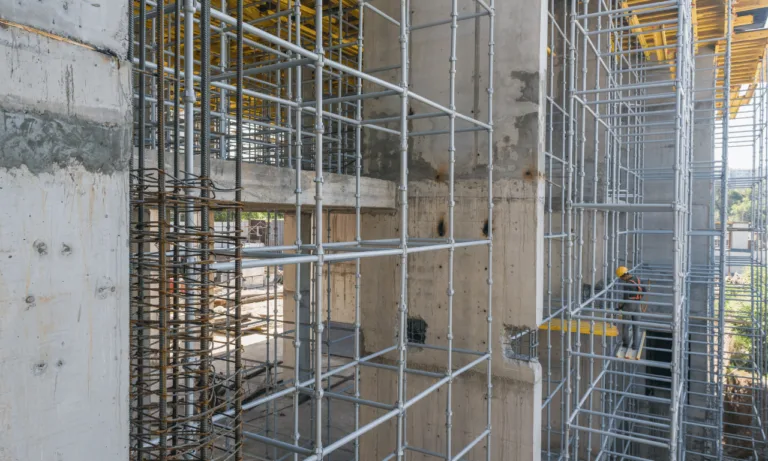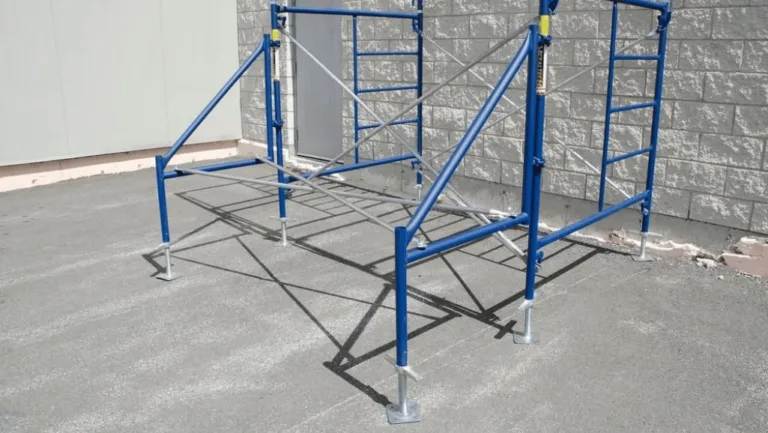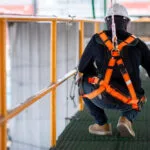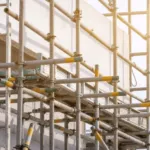Phone:
(+65)8319-0742
Welcome to our essential guide on diagonal bracing in scaffolds. In this article, we will explore the importance of scaffold safety and its role in scaffolding construction. Diagonal bracing plays a critical role in enhancing the stability and structural integrity of scaffolds, ensuring the safety of workers and the success of construction projects.
Scaffolding construction is a vital aspect of any building or maintenance project, providing the necessary platform for workers to perform their tasks at various heights. However, without proper safety measures and careful design, scaffolds can pose significant risks. Understanding the importance of diagonal bracing and its correct installation is key to creating a safe and secure working environment.
Throughout this guide, we will delve into the concept of diagonal bracing in scaffolds, exploring scaffold bracing and its different types. We will provide practical tips and guidelines for effective brace installation, along with maintenance best practices to enhance scaffold safety. Additionally, we will examine the OSHA requirements for scaffolds, emphasizing the significance of compliance in ensuring the well-being of workers.
By the end of this guide, you will have a comprehensive understanding of diagonal bracing in scaffolds and its importance in scaffold stability and compliance. We hope that the knowledge shared here allows you to approach scaffold construction with a greater focus on safety and efficiency.
Key Takeaways:
- Diagonal bracing is crucial for enhancing scaffold stability and ensuring worker safety in scaffolding construction.
- Understanding different types of scaffold bracing and following design guidelines is essential for proper brace installation.
- Compliance with OSHA requirements and regular scaffold inspections are vital for maintaining scaffold integrity.
- Following best practices for diagonal bracing can contribute to improved scaffold safety and efficiency.
- Expert recommendations on scaffold design factors, such as load capacity and brace angles, help optimize scaffold performance.
Understanding Diagonal Bracing in Scaffolds
Diagonal bracing plays a crucial role in ensuring the stability and safety of scaffolds. It is a structural element that provides lateral support and prevents excessive movement or collapse. In this section, we will explore the concept of scaffold bracing, different types of scaffolding, and the guidelines for scaffold design to ensure the proper installation of braces.
Scaffold Bracing
Scaffold bracing refers to the use of horizontal and diagonal elements to strengthen the scaffold structure and maintain its stability. These braces are strategically placed to withstand lateral forces and distribute the load evenly across the scaffold system. Properly installed bracing enhances the overall integrity of the scaffold and minimizes the risk of accidents.
Types of Scaffolding
There are several types of scaffolding commonly used in construction projects. Each type has its unique requirements when it comes to diagonal bracing:
- Tubular Scaffolding: Tubular scaffolding requires diagonal braces to be installed diagonally from the bottom at a 45-degree angle. These braces support the entire scaffolding structure and enhance its stability.
- H-Frame or Mason Scaffolding: H-frame scaffolding uses horizontal and diagonal braces in a ladder-like formation. These braces provide additional support and prevent the structure from swaying or tipping over.
- System Scaffolding: System scaffolding utilizes modular components and specialized connections. The diagonal braces in system scaffolding are designed to connect to the main vertical and horizontal members, providing stability and load distribution.
Scaffold Design Guidelines
Proper scaffold design is crucial for the effective installation of diagonal braces. Following these guidelines ensures the structural integrity of the scaffold system:
- Adhere to the manufacturer’s specifications and guidelines for brace installation.
- Consider the specific load requirements and anticipated lateral forces in the scaffold design.
- Maintain appropriate brace angles to ensure optimal stability. *(Note: Image below showcases scaffold bracing with different angles)*
By understanding the importance of diagonal bracing in scaffolds, the different types of scaffolding, and following scaffold design guidelines, construction professionals can create a safer and more resilient scaffold structure that withstands the demands of the job.
Ensuring Scaffold Stability and Compliance
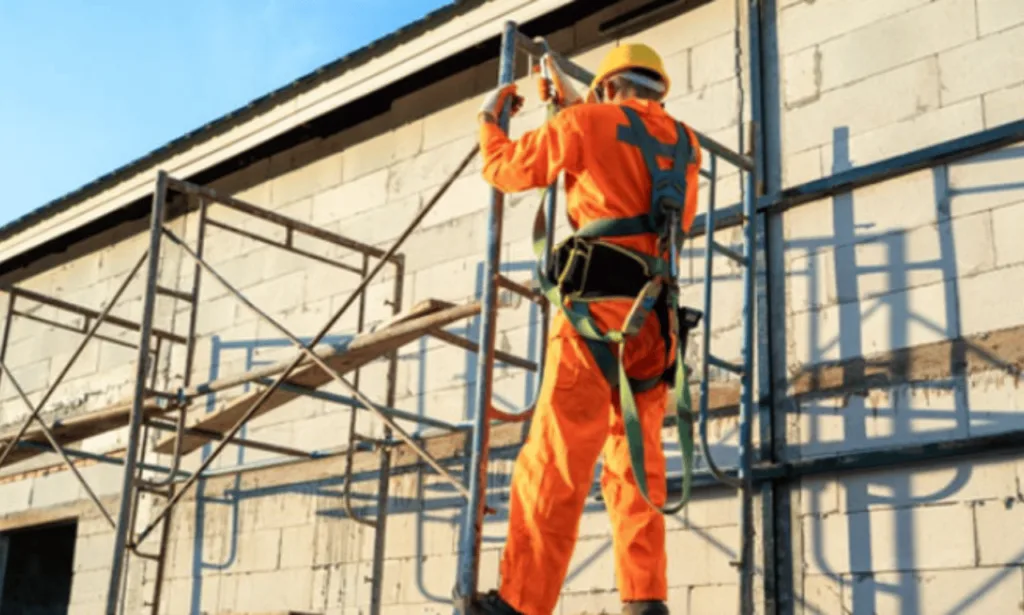
Safety is of paramount importance in scaffold construction. To ensure the safety of workers and comply with industry regulations, it is crucial to understand and adhere to the OSHA scaffold requirements. By following these requirements and implementing key measures, scaffold stability and compliance can be effectively achieved.
OSHA Scaffold Requirements
The Occupational Safety and Health Administration (OSHA) sets forth comprehensive guidelines for scaffold safety. These requirements encompass various aspects of scaffold design, construction, and usage to mitigate potential hazards. Adhering to OSHA regulations is not only essential for worker safety but also helps avoid costly penalties and legal consequences.
- Platform construction: OSHA specifies the materials, dimensions, and load-bearing capacity of scaffold platforms. It is crucial to use appropriate materials and ensure proper construction to maintain the structural integrity of the scaffold.
- Guardrails and toeboards: OSHA mandates the installation of guardrails and toeboards to prevent falls from elevated scaffolding. These safety measures provide essential protection for workers operating on the scaffold platform.
- Access and egress: OSHA requires safe and convenient access to scaffolding, including ladders, stairways, or ramps. Adequate access ensures easy movement for workers without compromising their safety.
- Bracing and anchorage: Scaffold stability heavily relies on proper bracing and anchoring. OSHA sets guidelines for diagonal bracing, cross bracing, and proper anchorage to ensure scaffold rigidity and prevent collapse.
Key Measures for Scaffold Stability and Compliance
Complying with OSHA scaffold requirements alone is not enough to ensure scaffold stability. Additional measures and best practices must be followed to maintain a safe working environment:
- Regular inspections: Regular inspections help identify potential hazards, such as damaged components or improper installation. Conduct frequent inspections by trained personnel to address any issues promptly.
- Proper training: Train workers involved in scaffold construction and usage on safety protocols, OSHA requirements, and the correct use of personal protective equipment.
- Secure scaffold foundations: Ensure that scaffold foundations are on stable and level ground. Use proper base plates and ensure adequate support to prevent scaffold tipping or sinking.
- Weather considerations: Account for weather conditions when erecting and using scaffolds. High winds, rain, or snow can affect scaffold stability and pose additional risks.
- Professional supervision: Assign a qualified supervisor to oversee scaffold construction and usage. Their expertise will ensure compliance, proper installation, and adherence to safety protocols.
- Continuous maintenance: Regularly inspect and maintain scaffolds to ensure they remain in optimal condition. Repair or replace any damaged components promptly to prevent accidents.
By adhering to OSHA scaffold requirements and implementing key measures for scaffold stability and compliance, construction companies can prioritize the safety of their workers and create a secure work environment. Comprehensive knowledge and adherence to these guidelines are essential to prevent accidents and ensure the successful completion of scaffold projects.
Best Practices for Diagonal Bracing
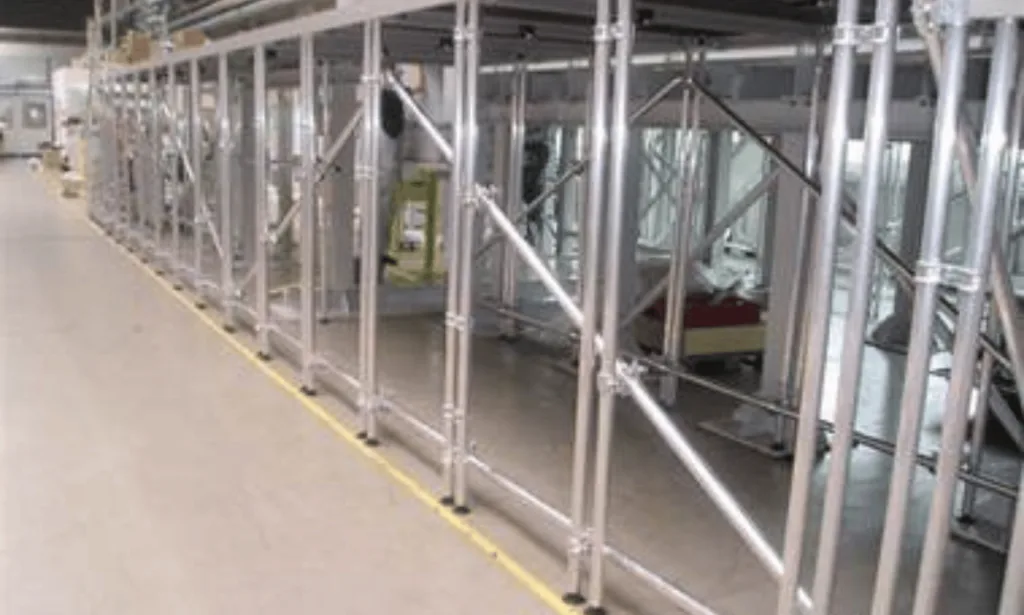
When it comes to ensuring the structural integrity and safety of scaffolding, proper diagonal bracing is essential. Diagonal braces provide stability and prevent lateral movement, minimizing the risk of collapse or accidents. To enhance scaffold safety, it is crucial to follow best practices for diagonal bracing. Here are some practical tips and guidelines to consider:
- Inspect the bracing components: Regularly check the diagonal braces for any signs of wear, damage, or corrosion. Replace any compromised components immediately to maintain the strength and stability of the scaffold.
- Optimize bracing patterns: Depending on the scaffold design and load requirements, select the appropriate bracing pattern. Common options include the X-brace, V-brace, and cross-brace. Consult the manufacturer’s guidelines or a structural engineer for recommendations.
- Ensure proper installation: Follow the manufacturer’s instructions or industry standards when installing the diagonal braces. Ensure they are securely attached to both the vertical and horizontal members of the scaffold structure.
- Apply correct tension: Diagonal braces should be tensioned properly to provide effective bracing. They should neither be too loose nor too tight. Use a torque wrench or tensioning tool to achieve the recommended tension.
- Consider wind load: In areas prone to strong winds, additional diagonal bracing may be required. Evaluate the local weather conditions and consult with experts to determine the appropriate bracing measures to mitigate potential wind load.
- Regularly inspect and maintain: Conduct routine inspections of the diagonal braces to ensure their continued effectiveness. Any signs of damage, deformation, or loosening should be addressed promptly. Regular maintenance, including cleaning and lubrication, can help extend the lifespan of the bracing components.
By following these best practices for diagonal bracing, you can significantly enhance the safety and stability of your scaffolding. Prioritizing proper installation, regular inspection, and maintenance will help prevent accidents and ensure a secure working environment. Remember, when it comes to scaffolding, safety should always be the top priority.
Scaffold Inspection Checklist
Regular inspection of scaffolds is crucial to identify potential hazards and maintain their integrity. By conducting thorough examinations at predetermined intervals, construction sites can ensure the safety of workers and prevent accidents that may result from faulty or compromised scaffolding.
Why is Scaffold Inspection Important?
**Scaffold inspection** is a proactive measure that enables early identification of potential issues, ensuring prompt repairs or adjustments are made before they pose a risk. By adhering to a scaffold inspection checklist, construction supervisors and safety officers can effectively monitor scaffolding conditions and mitigate hazards.
Implementing a standardized inspection process allows for systematic and consistent evaluations, reducing the likelihood of oversight or missed critical details. A thorough inspection can identify problems such as loose connections, damaged components, inadequate bracing, or improper assembly.
Key Elements of a Scaffold Inspection Checklist
A comprehensive scaffold inspection checklist should encompass the following key elements:
- Structural Integrity: Assess the overall stability and structural soundness of the scaffold, checking for any signs of corrosion, deterioration, or damage.
- Foundation and Ground Conditions: Evaluate the foundation and ground on which the scaffold is erected, ensuring a stable and level surface with appropriate soil conditions and load-bearing capabilities.
- Guardrails and Toeboards: Inspect the presence, condition, and proper installation of guardrails and toeboards to prevent falls and protect workers on elevated platforms.
- Access Points and Ladders: Verify the availability and condition of safe access points, including ladders, staircases, and walkways, to facilitate worker movement.
- Bracing and Connections: Examine the diagonal bracing, horizontal bracing, and connections, ensuring they are secure and functioning correctly to provide structural support.
- Platform Integrity: Check the stability, load capacity, and condition of scaffold platforms, ensuring they are free from debris, obstruction, and damage.
- Fall Protection Systems: Confirm the presence and effectiveness of fall protection systems, such as harnesses, lifelines, and anchor points, to safeguard workers at heights.
- Environmental Factors: Assess the impact of external factors, such as weather conditions, wind loads, and proximity to electrical equipment, on scaffold stability and safety.
Implementing the Scaffold Inspection Checklist
To effectively implement the scaffold inspection checklist, it is crucial to assign a qualified person or team responsible for conducting regular inspections. They should possess a comprehensive understanding of scaffold components, construction regulations, and safety standards.
The frequency of inspections should align with industry standards, site-specific conditions, and regulatory requirements. Commonly, inspections are conducted before initial scaffold use, after alterations, and at regular intervals determined by project duration, complexity, and risk levels.
The inspection findings must be documented, including any deficiencies identified, corrective actions taken, and subsequent re-inspections performed. This documentation provides a valuable record of scaffold safety compliance and acts as a reference for future inspections or audits.
Expert Recommendations for Scaffold Design

When it comes to scaffold design, following expert recommendations and guidelines is crucial to ensure the safety and performance of the structure. Industry professionals have identified key factors that significantly impact scaffold design, allowing for optimal load capacity, frame spacing, and brace angles. By considering these scaffold design guidelines, construction teams can create scaffolds that meet the highest safety standards and promote efficient workflow.
Factors to Consider in Scaffold Design
- Load capacity: Determining the maximum load a scaffold should bear is essential to prevent overloading and possible collapse. Consider various factors such as equipment, materials, and worker loads when calculating the load capacity of the scaffold.
- Frame spacing: Proper spacing between scaffold frames is crucial for stability and weight distribution. Experts recommend following manufacturer guidelines and considering the specific work environment to determine the appropriate frame spacing for each project.
- Brace angles: The angle at which diagonal braces are installed significantly impacts the strength and stability of the scaffold. It is important to follow scaffold design guidelines to ensure proper brace angles that provide optimal support and minimize the risk of sway or instability.
- Material selection: The selection of high-quality materials for scaffold construction is vital for durability and safety. Experts recommend using materials that meet industry standards and conducting regular inspections to identify any signs of wear and tear that may compromise the scaffold’s integrity.
- Height and reach: Determining the appropriate height and reach of the scaffold is essential to ensure safe access to work areas. Consider the specific requirements of the project, including the need for additional platforms or stairways, to facilitate efficient and safe work practices.
- Anchor points and tie-offs: Properly anchoring the scaffold and implementing effective tie-off systems are critical to prevent scaffold movement or detachment. Expert recommendations emphasize the importance of secure anchor points and comprehensive tie-off procedures to enhance scaffold stability.
By adhering to these scaffold design guidelines, construction teams can minimize the risk of accidents and create a safer work environment. It is crucial to stay updated on the latest industry standards and consult with experienced professionals to ensure compliance with local regulations and best practices.
Conclusion
In conclusion, understanding the importance of diagonal bracing in scaffolds is crucial for ensuring scaffold stability and compliance. By following best practices and adhering to safety regulations, scaffold construction can be made safer and more efficient.
Diagonal bracing plays a vital role in enhancing the overall strength and rigidity of scaffolds, minimizing the risk of collapse or instability. It provides crucial lateral support, preventing sway and sway-related accidents. By incorporating diagonal bracing into scaffold designs, construction professionals can create sturdy and reliable structures.
Moreover, compliance with OSHA requirements and industry guidelines is essential to maintain the safety and integrity of scaffolds. Regular inspections, thorough examinations, and adherence to scaffold design recommendations are key factors in ensuring the long-term stability and reliability of scaffolding systems.
By prioritizing diagonal bracing in scaffolds and making scaffold stability a top priority, construction professionals can provide a safer working environment for workers, reduce the likelihood of accidents, and improve overall construction productivity. It is imperative for all stakeholders in the construction industry to understand the significance of diagonal bracing and actively incorporate best practices to achieve optimal scaffold stability and compliance.
FAQ
Why is diagonal bracing important in scaffolds?
Diagonal bracing plays a crucial role in providing stability and rigidity to scaffolds. It helps resist lateral forces, minimize sway, and prevent structural failures.
What are the different types of scaffold bracing?
There are various types of scaffold bracing, including X-bracing, V-bracing, and K-bracing. Each type has its own advantages and is used based on specific scaffold design requirements.
What are the guidelines for scaffold design?
Scaffold design guidelines include factors such as load capacity, frame spacing, and brace angles. Following these guidelines is crucial to ensure the structural integrity and safety of the scaffold.
What are the OSHA requirements for scaffolds?
OSHA mandates several requirements for scaffolds, including proper installation and bracing, secure anchoring, regular inspection, and fall protection measures to ensure worker safety.
What are some best practices for diagonal bracing in scaffolds?
To ensure effective diagonal bracing, it is essential to use high-quality materials, install braces at optimum angles, inspect and maintain them regularly, and strictly follow manufacturer’s guidelines and industry standards.
What should be included in a scaffold inspection checklist?
A scaffold inspection checklist should include items such as checking for proper assembly, secure connections, stability, walkway condition, guardrails, and access points to ensure the scaffold is safe for use.
What are some expert recommendations for scaffold design?
Experts recommend considering factors such as site conditions, load requirements, and reinforcement techniques when designing a scaffold. It is crucial to consult with professionals and follow industry standards for optimal scaffold performance.

